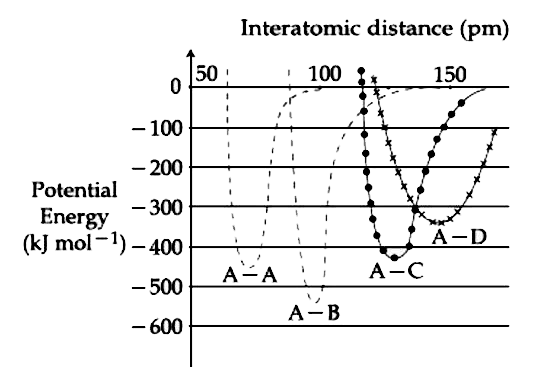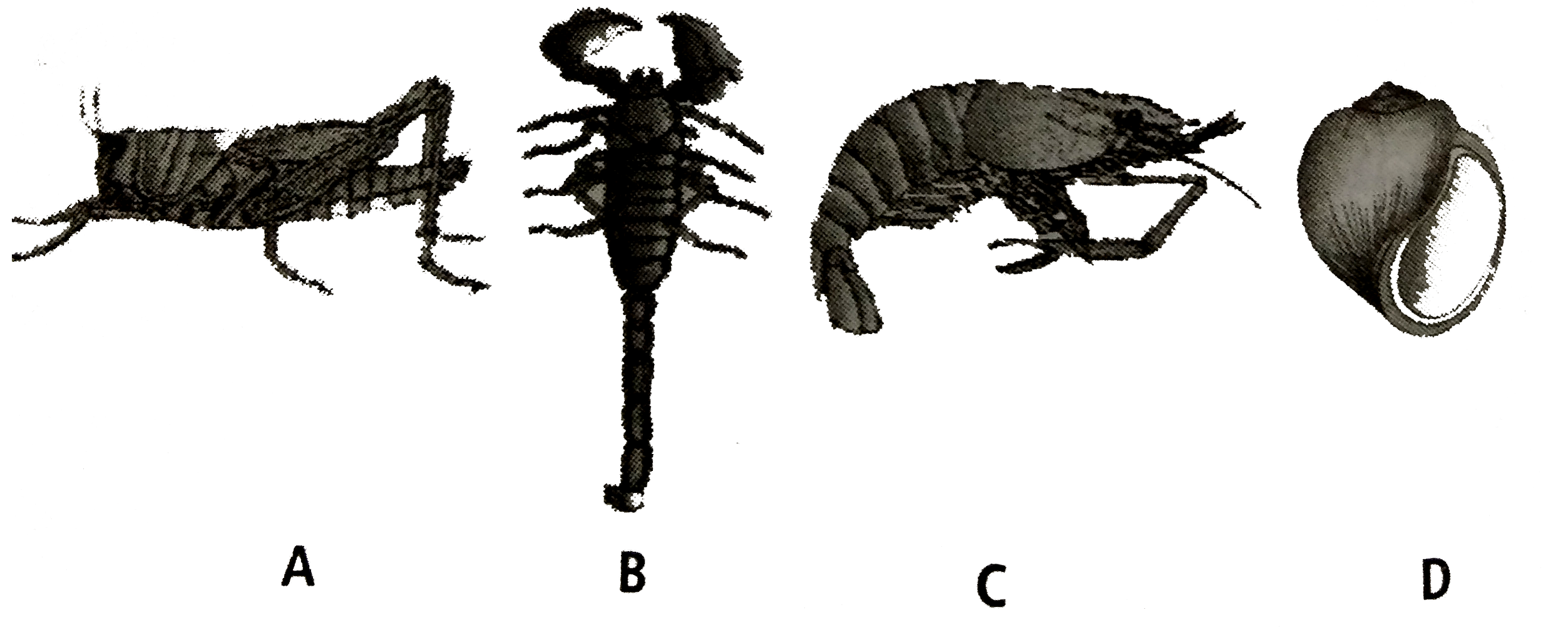The intermolecular potential energy for the molecules A, B, C and D given below suggests that :

A - B has the stiffest bond.
D is more electronegative than other atoms
A - A has the largest bond enthalpy.
A - D has the shortest bond length.
The correct Answer is:B
Step by step video, text & image solution for The intermolecular potential energy for the molecules A, B, C and D given below suggests that : by Chemistry experts to help you in doubts & scoring excellent marks in Class 12 exams.
Updated on:21/07/2023Topper's Solved these Questions
Similar Questions
Knowledge Check
Electronic configurations of four elements A, B, C and D are given below
A1s2,2s2,2p6B1s2,2s2,2p4C1s2,2s2,2p6,3s1D1s2,2s2,2p5Electronic configuration of four elements A,B,C and D are given below
AA<C<B<dBA<B<C<DCD<B<C<ADD<A<B<CAssertion (A) Three states of matter are the result of balance between intermolecular forces and thermal energy of the molecules.
Reason (R) Intermolecular forces tend to keep the molecules together but thermal energy of molecules tends to keep tham apart.ABoth A and R are true and R is the correct explanation of ABBoth A and R are true but R is not the correct explanation of ACA is true but R is falseDA is false but R is true
The values of osmotic potential (π) and pressure potential (ρ) of cells A, B, C and D are given below.

Identify the correct sequence that shows the path of movement of water from among the following .
View SolutionThe various conditions required for the liquefaction of gases A, B, C and D are given below:

View SolutionThe potential energy the molecules on the free serface of a liquid is
View SolutionAssertion (A) Three states of matter are the result of balance between intermolecular forces and thermal energy of the molecules.
Reason (R) Intermolecular forces tend to keep the molecules together but thermal energy of molecules tends to keep tham apart.
View SolutionWhen a wire is stretched the potential energy of its molecules will
View Solution


